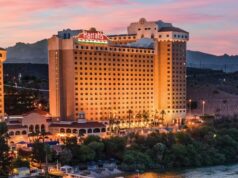In part one of this article (click here), I addressed how one can conserve water and cut costs in guestroom areas and building exteriors. In part two I will focus on kitchen, laundry, pool and spa, public restroom, and cooling tower opportunities.
In the Kitchen
The single largest user and waster of water in hotel kitchens is the dishwashing machine. The most serious problem occurs when the fill valve is not functioning properly and the machine is constantly trying to fill itself. The easiest way to inspect for this is to listen for a continuous sound of running water. When possible, be sure to run nothing but full loads in commercial dishwashing machines. If the need exists for continuous use of small loads, consider purchasing a residential style dishwasher for the kitchen.
Another big waste of water in the kitchen is continuously running faucets or dripping faucets. One dripping faucet can cost up to $150 per year in lost water, and will cost less than $5 to repair. Be sure not to thaw frozen foods with continuously running hot water. Also, train employees to conserve water by turning off faucets when sinks are not being directly used.
Don’t Forget the Laundry
Undoubtedly, the largest consumers of water in an on-premise hotel laundry are the wash wheels (extractors). Here, again, it is extremely important that employees only wash full loads, and if smaller loads are necessary, consider buying a residential style washer. The wash wheels also have automatic fill valves that have a propensity to stick and waste a considerable amount of water. Here, again, listen for the continuous sound of water running and request that engineering repair the valve immediately. In the future, when a major remodel is about to occur, consider converting the hotel’s laundry to an ozone type system, which uses less than half the amount of water of a traditional wash wheel.
Water usage can also be drastically curtailed by decreasing the number of daily loads that are washed. This will require either the implementation of a voluntary linen reuse program in guestrooms or a change in standard operating procedures where traditionally, bed and bath linens were changed out every day. Many hotels have already adopted these types of voluntary programs and have encouraged guests to reuse linens. Other hotels only change bed and bath linens specifically upon request, after every three days, or after a guest checks out.
Swimming Pools and Spas
Obviously, a swimming pool requires an immense amount of water to fill it. But it also consumes water on an ongoing basis to replace surface water that has evaporated. This is also true for hot tubs/spas. The single most cost-effective thing a hotel can do for both indoor and outdoor swimming pools or spas is to install an insulating cover over them when they are closed to use. This will conserve a significant amount of energy needed to heat the pool or spa and reduce water evaporation by about 50 percent, which means that the amount of chemical used to treat the water can be reduced by that same corresponding amount.
Public Restrooms
Most public restrooms utilize a different type of flushing system, referred to as a flush valve. These toilets and urinals do not have water tanks, but flush by simply releasing water into the appliance to allow thorough flushing. It has now become almost standard procedure to install ultrasonic motion sensors on these appliances that will automatically flush them with the proper amount of water each time they are used. While these devices do not necessarily save a lot of water, they do ensure that your facilities are flushed every time they are used and, therefore, eliminate plugged lines.
Air-Conditioning System
Some larger hotels utilize a cooling tower as a means of transferring heat from inside the building to the exterior. The cooling tower works on the principle of evaporation, which provides about 15 degrees of free cooling. In other words, the cooling tower evaporates a very large amount of water to the atmosphere. This water is also eligible for a sewer credit. This action requires installing a water meter on the make-up line to the cooling tower to obtain a sewer credit from the water utility. Since this is a major loss of water, the credit can reach thousands of dollars per year for the hotel.
In Conclusion
Water is our most precious resource and it is the foundation of life itself. It is time to get serious about using water intelligently. These suggestions will have substantially no detrimental effect on the delivery of guest service and may help provide fresh water for generations to come.
Phil Sprague is a member of the AH&LA Executive Engineers Committee and president of PSA Hotel Energy Consultants. Based in Minneapolis, PSA Hotel Energy Consultants assists lodging companies and individual properties to develop effective, cost-saving energy strategies by auditing and assessing all energy consuming devices and appliances, and delivering comprehensive, customized recommendations in an actionable format. They can be reached at 952-472-6900.
This article first appeared in The Rooms Chronicle, Vol. 15, No. 4.







